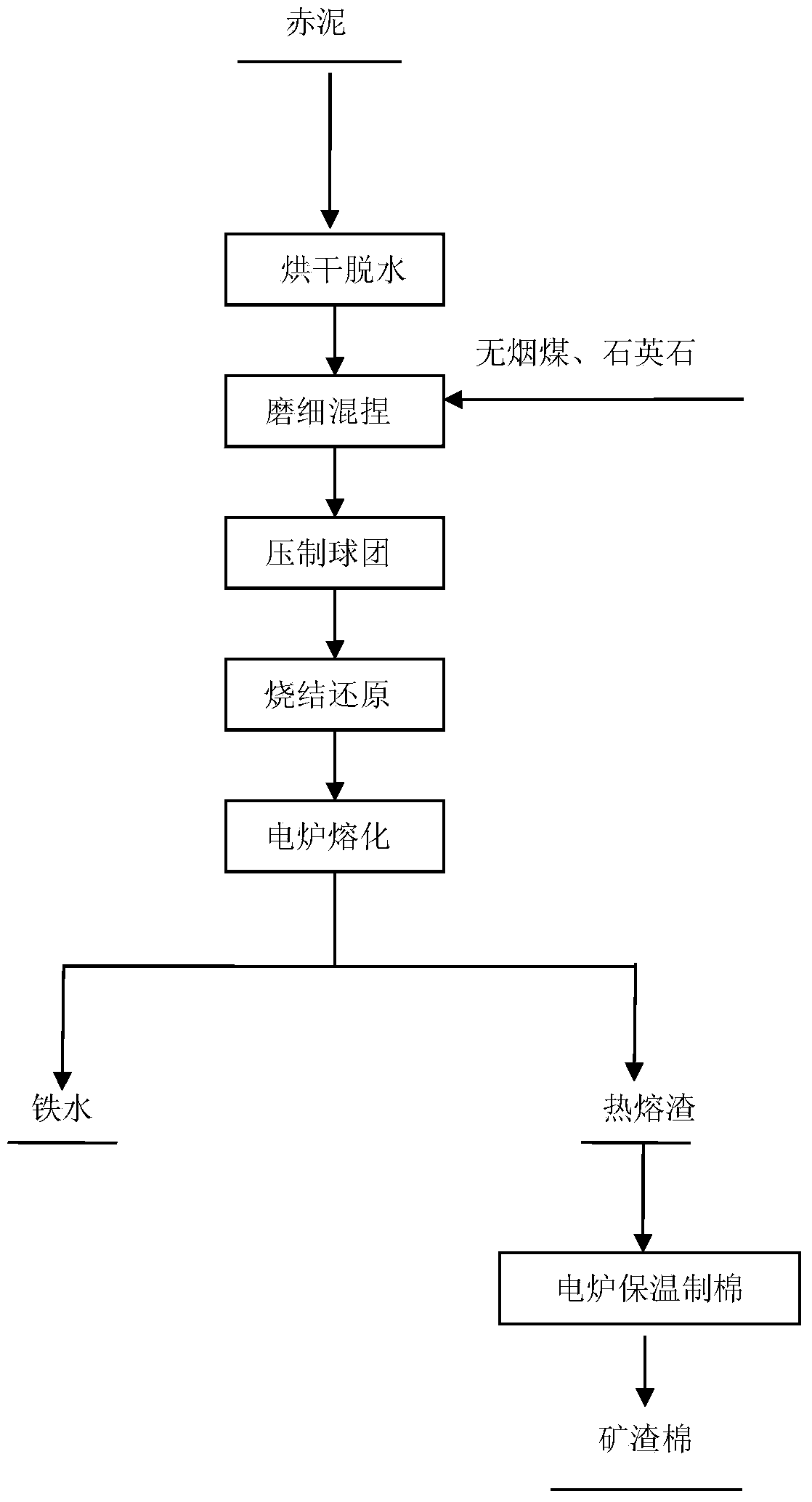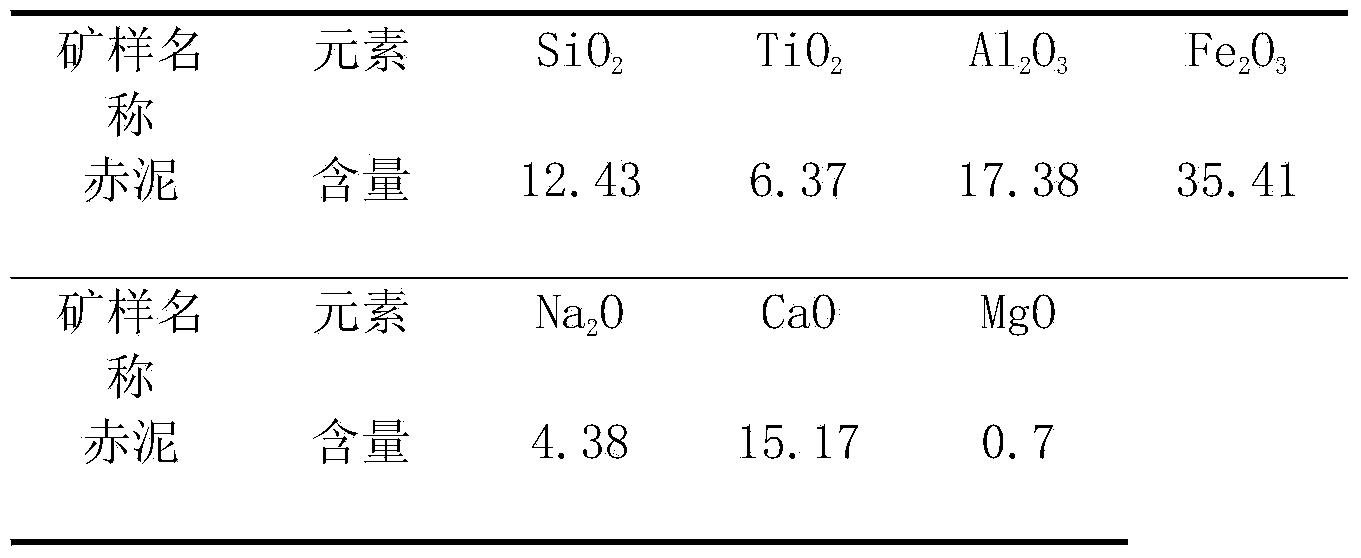Method for producing high-strength and high-flexibility heatproof mineral wool and iron by using red mud
A slag wool, high-strength technology, applied in the field of comprehensive resource recycling, to achieve the effect of easy promotion, significant economic benefits, and maintenance of ecological balance
- Summary
- Abstract
- Description
- Claims
- Application Information
AI Technical Summary
Problems solved by technology
Method used
Image
Examples
Embodiment 1
[0044] a. Use a dryer to dehydrate the red mud from the alumina production industry to a water content of 10%. Add 10% of reducing agent anthracite with a particle size of less than 1 mm and 25% of conditioning agent quartz stone after being ground by a ball mill. Mix thoroughly in a kneader and press into pellets with a ball press.
[0045] b. The pellets are put into the coal-fired rotary kiln for material dehydration and iron pre-reduction, and the temperature is controlled at 1000 degrees. The reduction time is 3 hours; more than 70% of the iron is reduced to metallic iron.
[0046] c. Continuously add hot pellets into the electric furnace to melt and separate iron and slag, and the melting temperature is 1400 degrees. Then the molten iron is discharged from the iron outlet, and the molten slag is discharged from the slag outlet. The molten slag is kept at 1400 degrees by a heat-retaining electric furnace and released continuously to make slag wool.
[0047] d. The reco...
Embodiment 2
[0049] a. Use a dryer to dehydrate the red mud from the alumina production industry to a water content of 15%. Add 15% of reducing agent anthracite with a particle size of less than 1 mm and 30% of conditioning agent quartz stone after being ground by a ball mill. Mix thoroughly in a kneader and press into pellets with a ball press.
[0050] b. Pellets are added to the coal-fired rotary kiln for material dehydration and iron pre-reduction, and the temperature is controlled at 1100 degrees. , Reduction 4h; More than 80% of iron is reduced to metallic iron.
[0051] c. Continuously add hot pellets into the electric furnace to melt and separate iron and slag, and the melting temperature is 1450 degrees. Then the molten iron is discharged from the iron outlet, and the molten slag is discharged from the slag outlet. The molten slag is kept at 1450 degrees by a heat-retaining electric furnace and released continuously to make slag wool.
[0052] d. The recovery rate of slag into ...
Embodiment 3
[0054] a. Dehydrate the red mud from the alumina production industry to a water content of 18% with a dryer. Add 20% of reducing agent anthracite and 40% of conditioning agent quartz stone which have been ground by a ball mill with a particle size of less than 1 mm. Mix thoroughly in a kneader and press into pellets with a ball press.
[0055] b. The pellets are added to the coal-fired rotary kiln for material dehydration and pre-reduction of iron. The temperature is controlled at 1050 degrees and the reduction is 5 hours. More than 90% of iron is reduced to metallic iron.
[0056] c. Continuously add hot pellets into the electric furnace to melt and separate iron and slag, and the melting temperature is 1500 degrees. Then the molten iron is discharged from the iron outlet, and the molten slag is discharged from the slag outlet. The molten slag is kept at 1500 degrees by a heat-retaining electric furnace and released continuously to make slag wool.
[0057] d. The recovery ...
PUM
| Property | Measurement | Unit |
|---|---|---|
| diameter | aaaaa | aaaaa |
Abstract
Description
Claims
Application Information
 Login to View More
Login to View More - R&D
- Intellectual Property
- Life Sciences
- Materials
- Tech Scout
- Unparalleled Data Quality
- Higher Quality Content
- 60% Fewer Hallucinations
Browse by: Latest US Patents, China's latest patents, Technical Efficacy Thesaurus, Application Domain, Technology Topic, Popular Technical Reports.
© 2025 PatSnap. All rights reserved.Legal|Privacy policy|Modern Slavery Act Transparency Statement|Sitemap|About US| Contact US: help@patsnap.com


